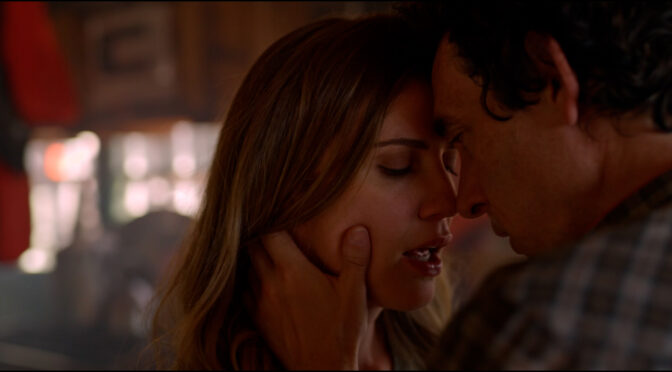 Traumatic events warp the timeline of a life: their emotional gravity pulls every other event in a life back towards them like a black hole. THE BURNING SEASON uses a non-linear structure and a focus on small character details to tell the story of a traumatic event that dominates the lives of two people and how the darkness of their trauma impacts the lives of the people around them.
Traumatic events warp the timeline of a life: their emotional gravity pulls every other event in a life back towards them like a black hole. THE BURNING SEASON uses a non-linear structure and a focus on small character details to tell the story of a traumatic event that dominates the lives of two people and how the darkness of their trauma impacts the lives of the people around them.
THE BURNING SEASON’s structure is indebted to Harold Pinter’s play, Betrayal, where scenes are set up in reverse chronology. After a brief opening shot, the film starts with a title card reading ‘Chapter 7’ and the wedding of JB (Jonas Chernick) and Poppy (Tanisha Thammavongsa). The wedding simmers with underlying tension and secrets, most notably expressed in the ambiguous glances between JB and Alena (Sara Canning) and the anger of Alena’s husband Tom (Joe Pingue). As tensions come to a head at what turns out to be the emotional climax of the chronological narrative, the scene cuts to Chapter 6 set earlier in the narrative.
“The tragedy of the film reveals itself as the structure: the sense that every aspect of their lives revolves around this one moment of trauma that they can never escape…”
The film continues like this pulling us backwards through the lives of JB and Alena. Every summer they meet at JB’s lakeside rental cabins and these brief summer rendezvous dominate their emotional lives as well as those of their partners. The reverse chronological structure means we hear about events that already happened before we see them. We’re invited to ask ourselves how these characters got to this point, what drives them to the intensities of their emotional affair, and what trauma brought them together at this place?
Beneath the film’s structure, the script by Chernick and Diana Frances contains a lot of little details that bring a sense of realism to the film’s relationships. Nuances of dialogue, small facial expressions, and couple-y in-jokes are both the little things that relationships are made of and the foundation of this strong dialogue. This, as well as the convincing chemistry between Chernick and Canning, allows the scripts to build outwards into broader discussions of relationships and the ideas about kids, friends, the past, and secrets that preoccupy couples. Though the flow of JB and Alena’s lives is dominated by the huge trauma that they continually allude to, there’s also a firm basis in the shared small details of a life spent together.
THE BURNING SEASON drives towards a conclusion that feels inevitable, especially given the opening shot that unfortunately sits outside the fairly strict reverse chronology of the rest of the film. The concluding ‘Prologue’ has a darker edge to it than the rest of the film, one that does not quite sit comfortably with everything else and that recontextualises how JB and Alena have been driven together by their darker instincts in spite of the harm that they’re doing to the people around them. The tragedy of the film reveals itself as the structure: the sense that every aspect of their lives revolves around this one moment of trauma that they can never escape, orbiting around the singularity of this event and ultimately falling into it.

